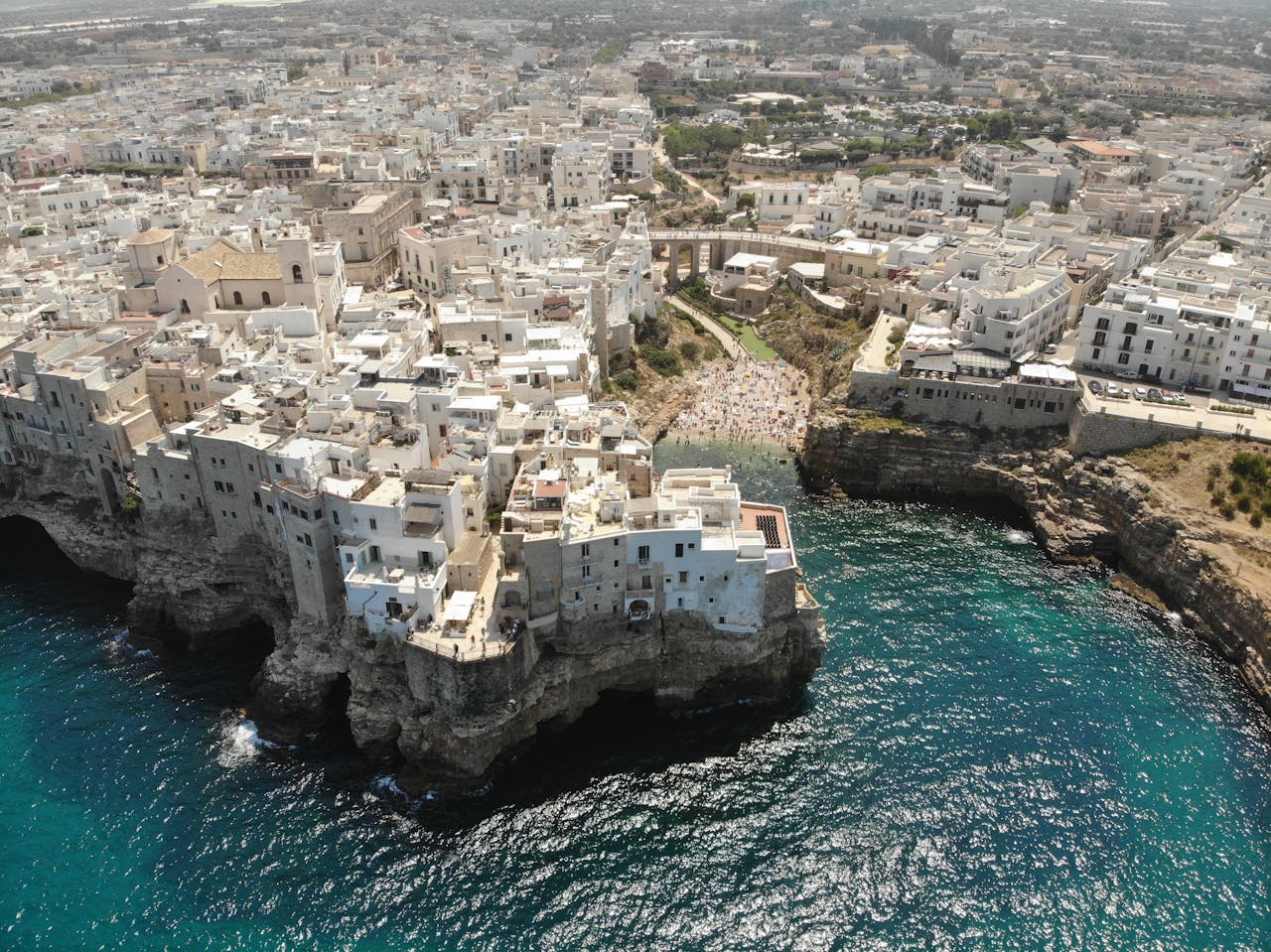Puglia, the sun-drenched heel of Italy’s boot, boasts some of the most stunning coastlines in the Mediterranean. With over 800 kilometers of beaches stretching along the Adriatic and Ionian Seas, the region offers an unparalleled variety of coastal experiences. But what many visitors don’t realize is that Puglia is windy! The character of Puglia’s beaches can change dramatically depending on the region’s prevailing winds. Understanding these winds can help you choose the perfect beach for your visit, ensuring calm waters, clear skies, and an unforgettable seaside escape after your visit to Museo dei Bambini.
Tramontana: Cool Northern Breezes
The Tramontana, a cool and dry wind that blows from the north, is a blessing during the hot summer months. It clears the skies and lowers temperatures slightly, making it a welcome reprieve from the heat. When the Tramontana is blowing, the Ionian coast becomes an idyllic paradise with calm, crystalline waters. Beaches like Baia Verde near Gallipoli shine during this wind, offering tranquil swimming conditions and vibrant surroundings. Porto Cesareo, with its shallow and family-friendly waters, is another perfect spot to enjoy during Tramontana’s reign. On the Adriatic side, however, this wind creates choppier seas, making it less suitable for swimming but offering dramatic views at places like Torre dell’Orso.
Scirocco: Hot Winds from the Sahara
The Scirocco, a hot and humid wind from the southeast, brings with it a taste of the Sahara. This wind raises temperatures significantly and sometimes creates a hazy atmosphere. However, it also calms the Adriatic Sea, making it the ideal time to visit beaches like Torre dell’Orso, known for its golden sands and iconic “Le Due Sorelle” rock formations. Further south, Otranto’s mix of sandy beaches and rocky coves offers calm waters and a picturesque backdrop during Scirocco conditions. On the Ionian coast, beaches such as Punta Prosciutto may experience rougher seas, making them less appealing when this wind dominates. Perfect opportunity to stay cool and take the family to Museo dei Bambini in Lecce.
Maestrale: Fresh Northwestern Gusts
The Maestrale, a fresh and cool wind from the northwest, is often associated with clear skies and a refreshing breeze. This wind works wonders on the Ionian coast, where it enhances water clarity and ensures a calm sea. Punta Prosciutto, with its soft sands and lagoon-like waters, becomes a serene escape during the Maestrale. Further south, the pristine beaches of Marina di Pescoluse, often called the Maldives of Salento, offer a perfect retreat under these conditions. On the Adriatic side, the Maestrale can create choppy waters, but it provides stunning views and invigorating sea breezes at locations like Polignano a Mare.
Grecale: Brisk Northeastern Winds
The Grecale, blowing from the northeast, is a colder wind that can be strong and brisk, particularly in winter months. While it creates waves on the Adriatic coast, making it a favorite among surfers, it also transforms beaches like Monopoli into dynamic and photogenic landscapes. For those seeking a more tranquil experience, the Ionian coast is a better choice when the Grecale blows. Porto Selvaggio, a protected nature reserve with rugged cliffs and secluded coves, provides shelter and calm waters during this wind, making it an excellent spot for nature lovers and adventurers.
Seasonal Considerations
While the winds are the primary factor in choosing a beach, the season also plays a role in your experience. In summer, the Tramontana and Maestrale winds are more common, bringing cooler air and clear skies. During this peak season, the Ionian side is particularly appealing for its calm waters, with destinations like Porto Selvaggio offering a blend of natural beauty and tranquility. Spring and autumn bring transitional weather, with Scirocco and Grecale winds more likely. These seasons are ideal for visiting Adriatic beaches like the sandy coves near Monopoli or the dramatic cliffs of Roca Vecchia, where the waters remain calm and inviting. In winter, stronger winds like the Grecale and Maestrale dominate, creating dramatic seascapes perfect for photography or hiking along the rugged Adriatic coast in towns like Vieste.
Practical Tips for Beach Days in Puglia
To make the most of your time on Puglia’s beaches, it is essential to plan ahead. Always check the weather and wind forecast using local apps or websites to determine the prevailing wind and choose your beach accordingly. Many beaches, especially on the Ionian coast, have limited natural shade, so bringing an umbrella or renting one from a lido is highly recommended. Packing essentials like sunscreen, water shoes, and snorkeling gear can enhance your beach experience, especially on rocky stretches like Porto Badisco. Respecting local customs is important, as some beaches have paid sections (lidos) and free sections (spiaggia libera). Lastly, don’t hesitate to explore hidden gems beyond the popular spots. Puglia is full of lesser-known beaches and coves, like the secluded Cala dell’Acquaviva, which offers a peaceful retreat surrounded by steep cliffs.
Conclusion
Puglia’s beaches are as diverse as its winds, offering something for every type of traveler. Whether you’re seeking calm, shallow waters for your family, dramatic cliffs for adventure, or hidden coves for solitude, understanding the region’s wind patterns will help you make the most of your seaside escape. With a little planning, you can enjoy Puglia’s breathtaking coastline at its very best, no matter which way the wind blows.



